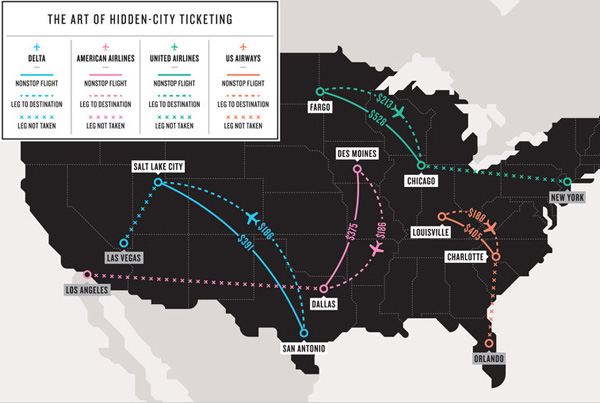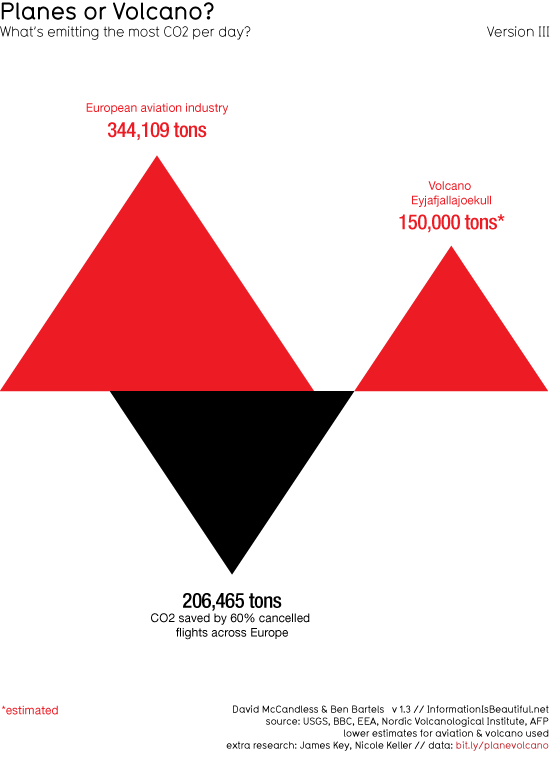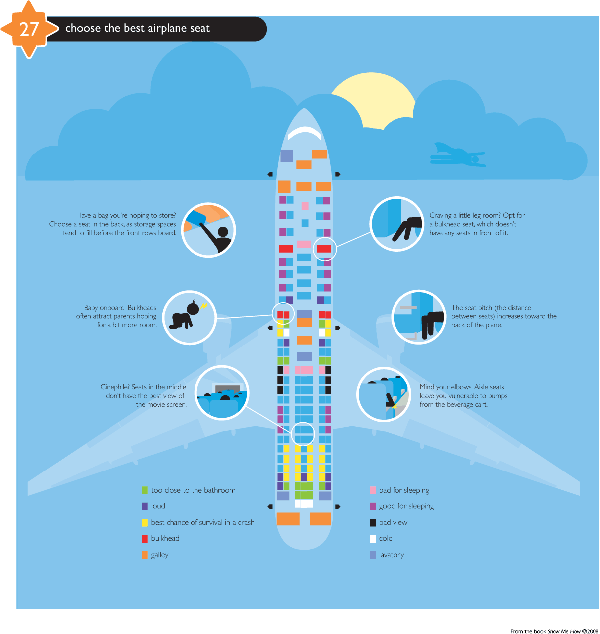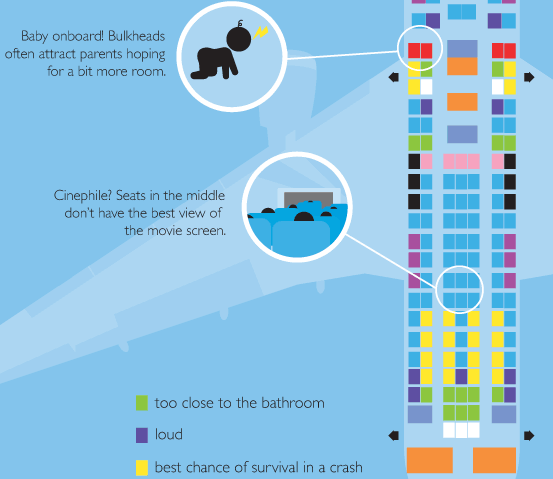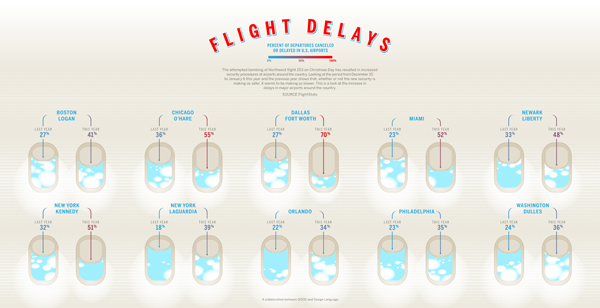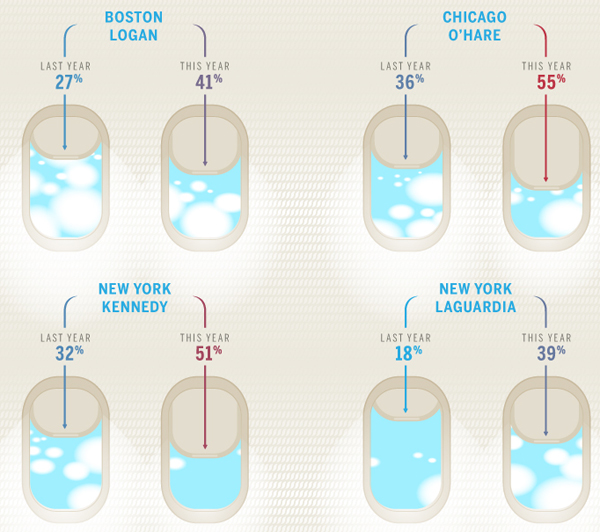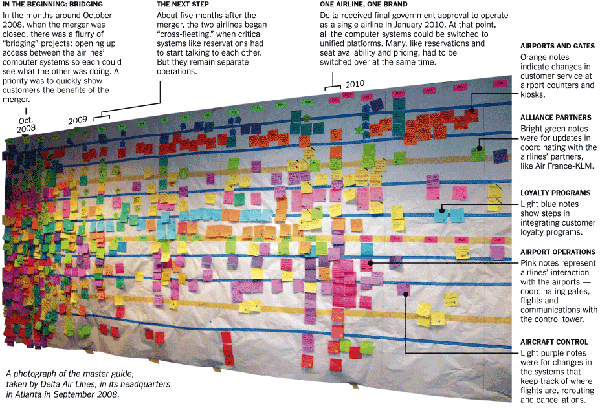
What works
As an image, this picture does an excellent job of supporting the argument made in the accompanying article, which is basically that merging two large companies, each with their own deeply embedded systems for handling passengers, planes, workers, and baggage as well as their own attitudes about how things should be done is a task nobody can understand until they attempt it. And then it becomes tedious almost immediately. The New York Times often saves clinchers for the end of the article and this one was a good one. Peter Wilander, an executive at Delta responsible for in-flight services (talk to this guy if you have a problem with the peanuts), cannot hide his frustration,
“The amount of work is boring beyond belief,” Mr. Wilander said. “It is also critical to the airline.”
What needs work
Is there anyone else out there who feels that if the PhD in applied mathematics is resorting to a merger by post-it, that there are real shortcomings in the system’s management abilities at Delta? Theresa Wise is Delta’s Chief Information Officer and the creator of this lovely Post-It art. While the post-its are both aesthetically pleasing and instantly graspable, I could not square the idea that a bunch of post-its stuck to a wall would really be the right answer to a problem like this:
A major switch happened when the new airline canceled all Northwest’s bookings and transferred them to newly created Delta flights in January 2010. It required computer engineers to perform 8,856 separate steps stretched out over several days.
Here’s hoping that my experience with Delta later today does not involve making seat assignments with Post-Its. For all of my snarkiness, I generally find Delta to be a good airline, better than the old Northwest.
References
Mouawad, Jad. (19 May 2011) Delta-Northwest Merger’s Long and Complex Path in The New York Times, Business Day Section. [Graphic How to Merge Two Airlines]

